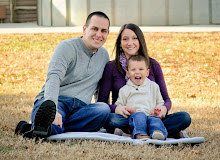After reading both the textbook and the articles, I found that there were two major themes. The first main idea is that there are multiple literacies, and that all types of literacies need to be recognized. One idea that stood out to me is that teachers often look at children entering kindergarten as "literacy deprived," however, they actually know a lot about literacy. They have been exposed to other people, signs in the community, books, pictures, movies and television and many other things. It is important to recognize this and to treat all students as though they have the ability to read and write. (Bell & Jarvis)
The second major theme throughout the readings is that literacy in home and school need to be connected. What generally occurs is that literacy in schools is limited to reading and writing, while literacy in society includes much more than just those two things. I think that this is so important to recognize! Nell Duke also touches on this point in her article titled Genres at home and at school: Bridging the known to the new. She states that "when schools actively attempt to link children's home and school literacies, students' literacy development is facilitated" (p 30). I think that consistency in any area of learning is beneficial to students, especially when home and school are connected.
One of my favorite quotes from the readings is from the Gallego & Hollingsworth text. "The flexible use of multiple sign systems supports students in bringing their personal and sociocultural strengths as meaning makers into school and gives them access to a wider range of connections from their lives outside of school. Literacy should not be a different event in school than in their lives in the community and in their homes" (p 44). This quote does a great job of summarizing the two major themes from our readings. It states that students should have the opportunity to express their thoughts and ideas in many different forms, and that schools should teach literacy in a way that will benefit them outside of the classroom.
The multiple readings that I completed on these particular ideas have convinced me that this is the best way to go when teaching literacy. When I have my own classroom full of students, I plan on including brochures, maps, menus, and various other types of items that are important in society. I hope that by including these in my classroom, my students will become excited and motivated to use them.
Subscribe to:
Post Comments (Atom)

1 comment:
I agree with you in that future classrooms must be literacy rich and no just with children's book. I'll be the first one to spend an entire paycheck on a scholastic book order, however bell & jarvis also helped me realize that students don't need just books, anything with words, writing, or pictures can enhance a students literacy. I cannot wait to encourage young students that they are readers whether they realize it or not. Just because they may not know what the letters stand for, they will be able to go to any country and know that the big yellow arches mean there is a McDonald's right around the corner.
Post a Comment